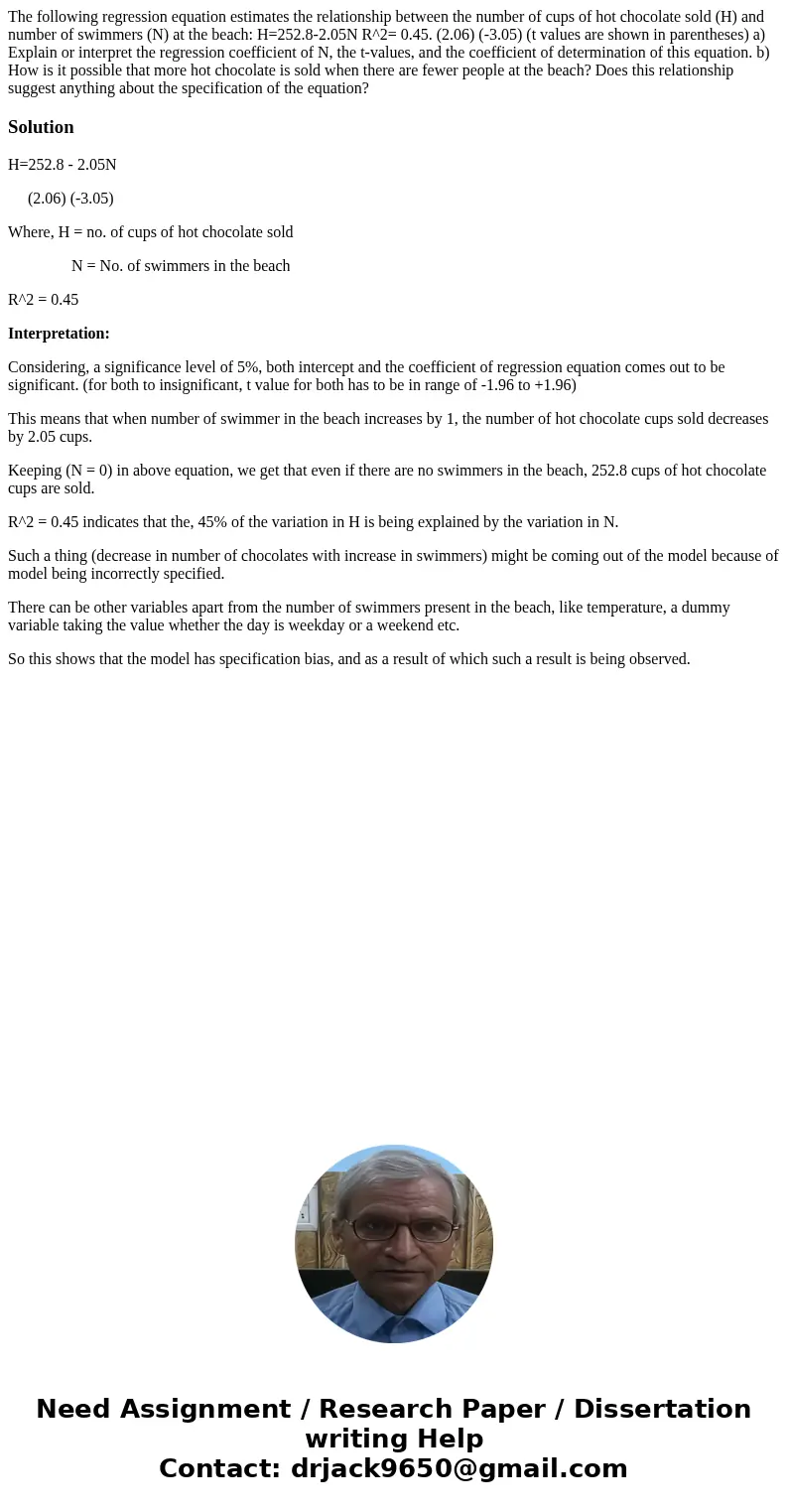The following regression equation estimates the relationship
The following regression equation estimates the relationship between the number of cups of hot chocolate sold (H) and number of swimmers (N) at the beach: H=252.8-2.05N R^2= 0.45. (2.06) (-3.05) (t values are shown in parentheses) a) Explain or interpret the regression coefficient of N, the t-values, and the coefficient of determination of this equation. b) How is it possible that more hot chocolate is sold when there are fewer people at the beach? Does this relationship suggest anything about the specification of the equation?
Solution
H=252.8 - 2.05N
(2.06) (-3.05)
Where, H = no. of cups of hot chocolate sold
N = No. of swimmers in the beach
R^2 = 0.45
Interpretation:
Considering, a significance level of 5%, both intercept and the coefficient of regression equation comes out to be significant. (for both to insignificant, t value for both has to be in range of -1.96 to +1.96)
This means that when number of swimmer in the beach increases by 1, the number of hot chocolate cups sold decreases by 2.05 cups.
Keeping (N = 0) in above equation, we get that even if there are no swimmers in the beach, 252.8 cups of hot chocolate cups are sold.
R^2 = 0.45 indicates that the, 45% of the variation in H is being explained by the variation in N.
Such a thing (decrease in number of chocolates with increase in swimmers) might be coming out of the model because of model being incorrectly specified.
There can be other variables apart from the number of swimmers present in the beach, like temperature, a dummy variable taking the value whether the day is weekday or a weekend etc.
So this shows that the model has specification bias, and as a result of which such a result is being observed.

 Homework Sourse
Homework Sourse